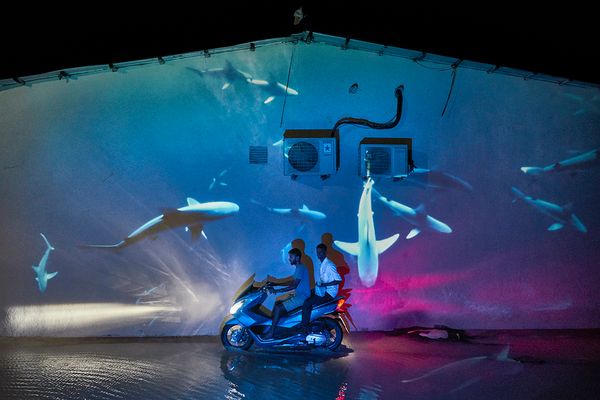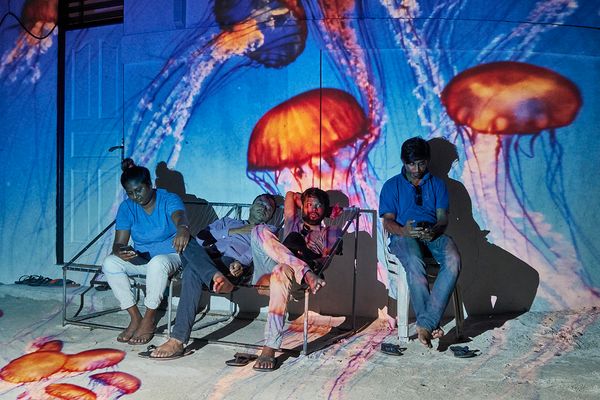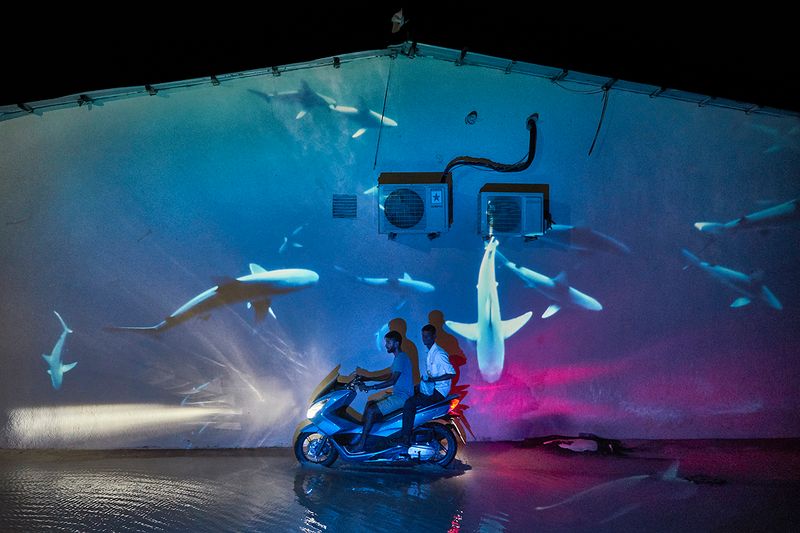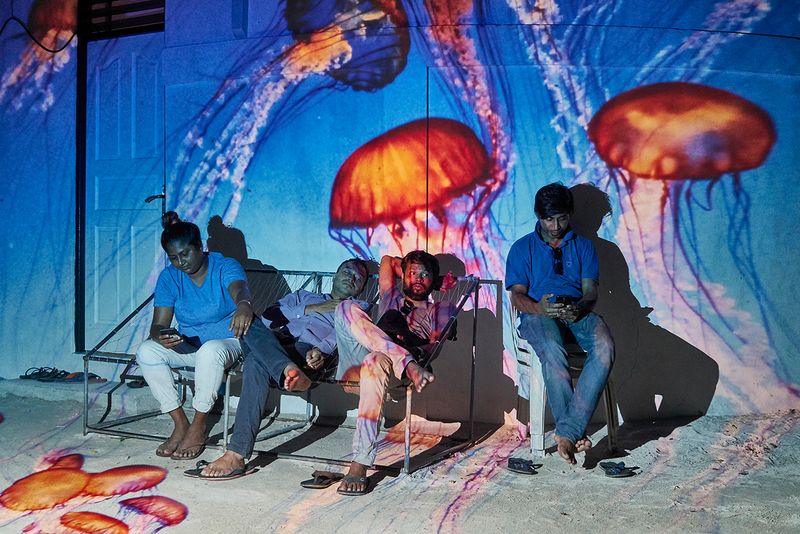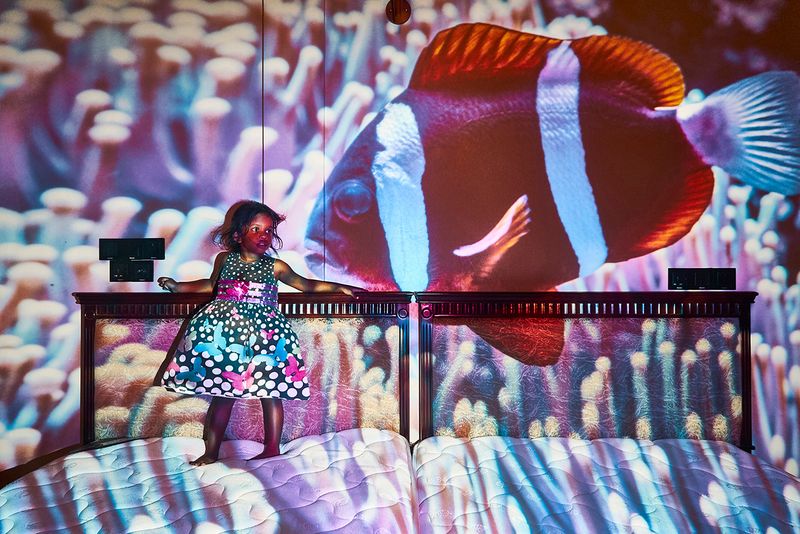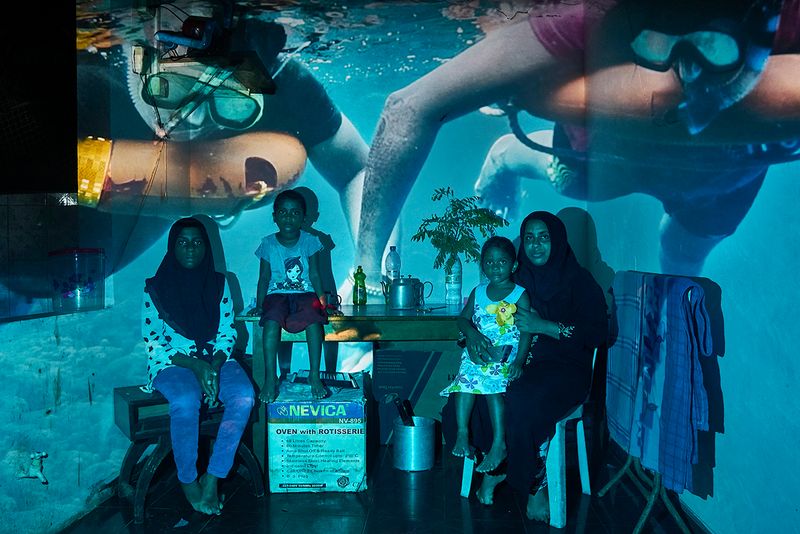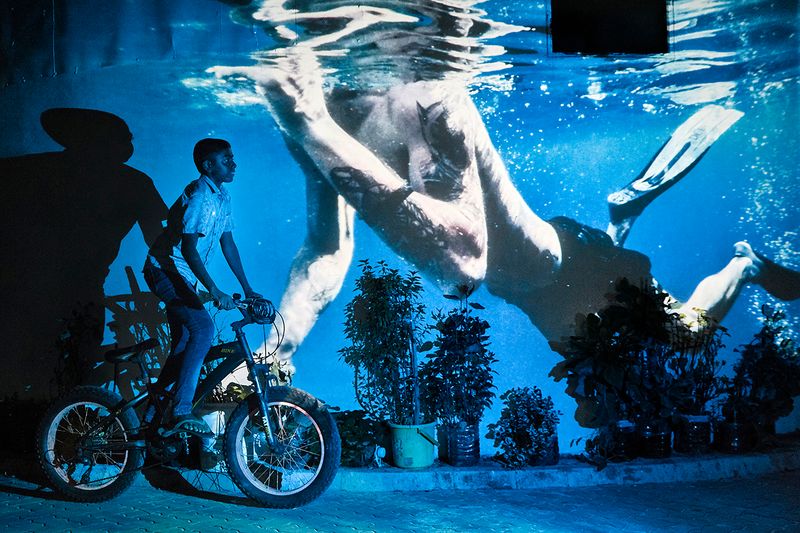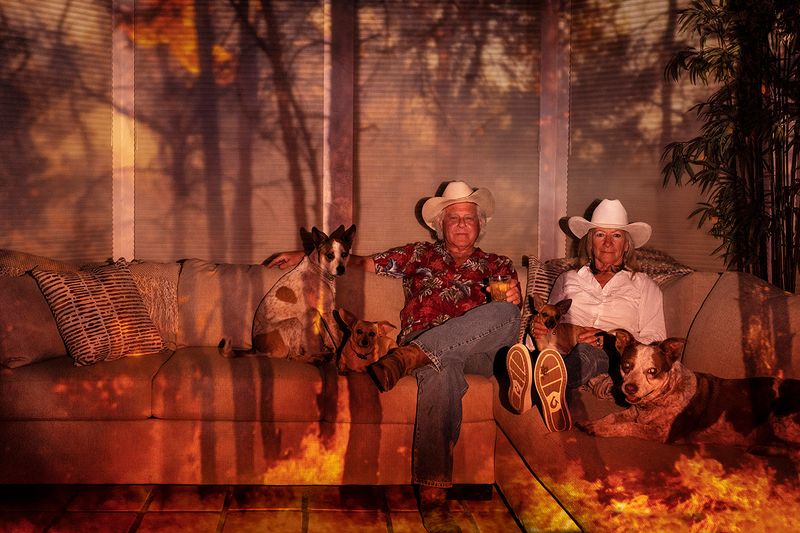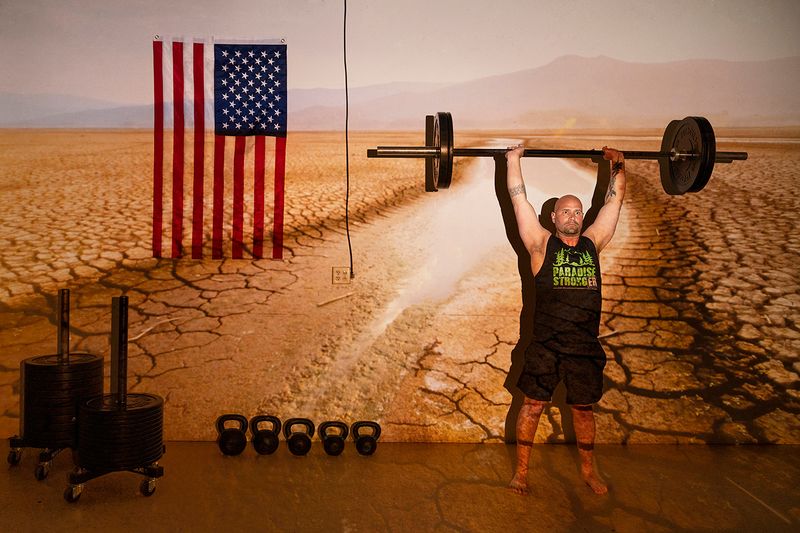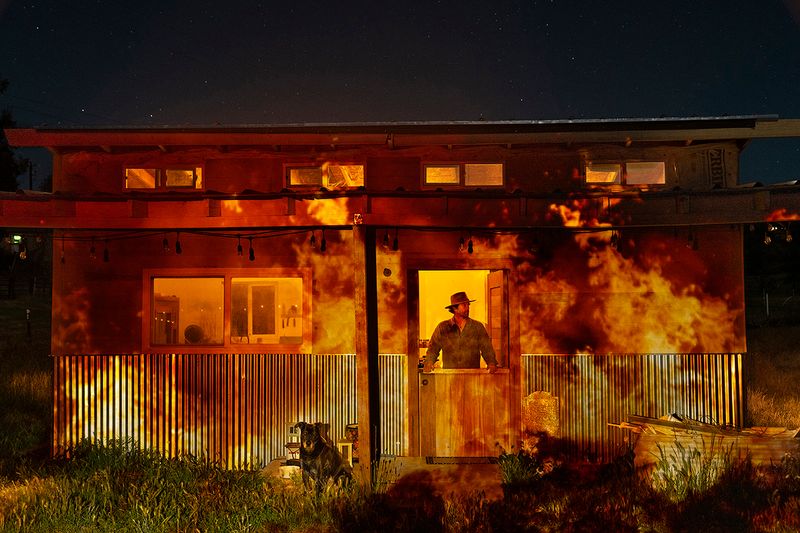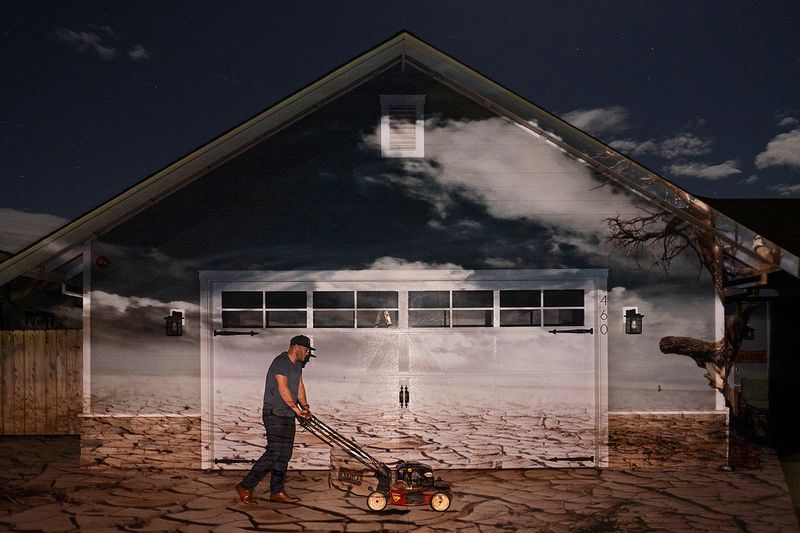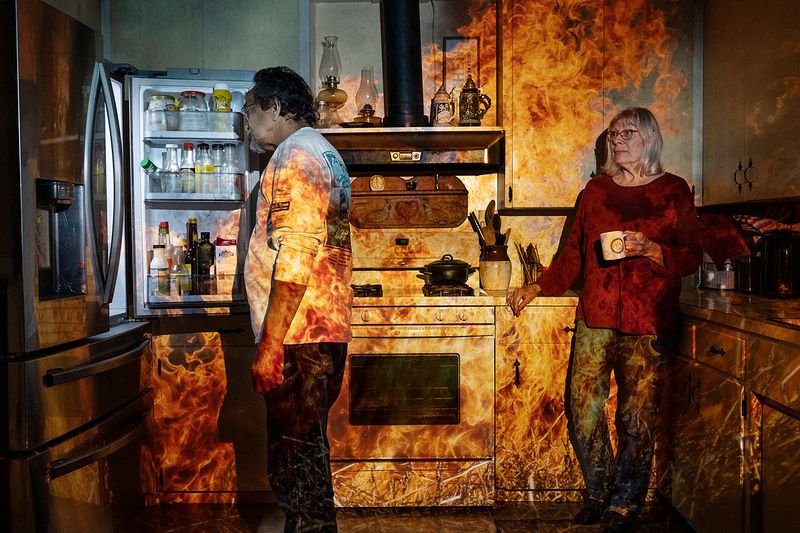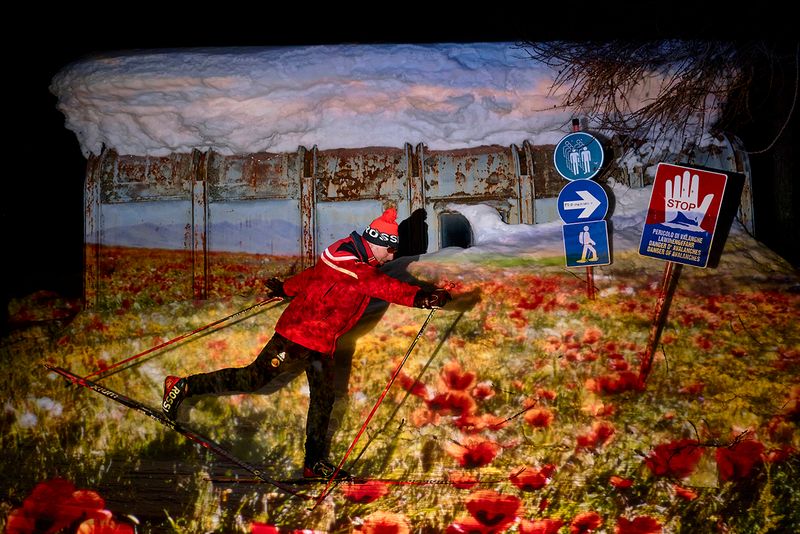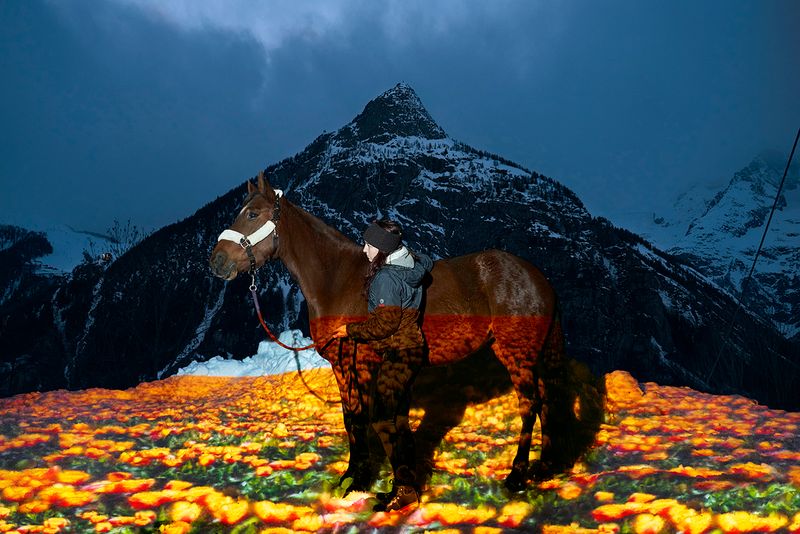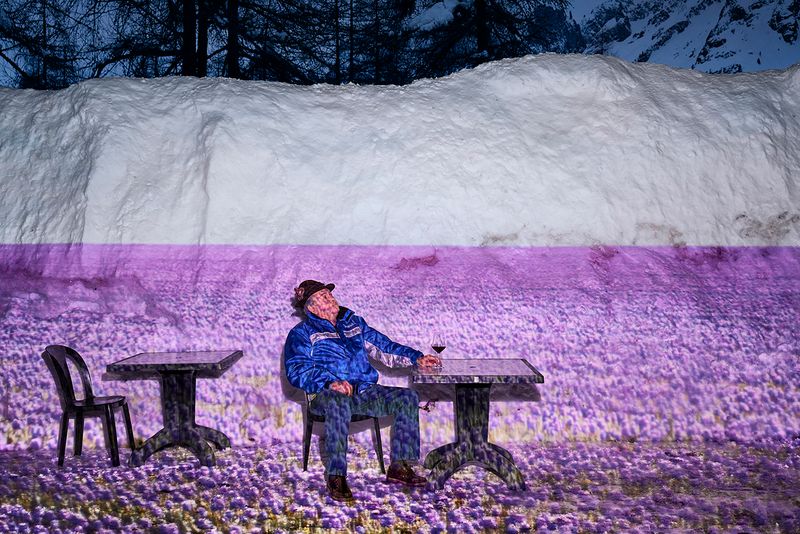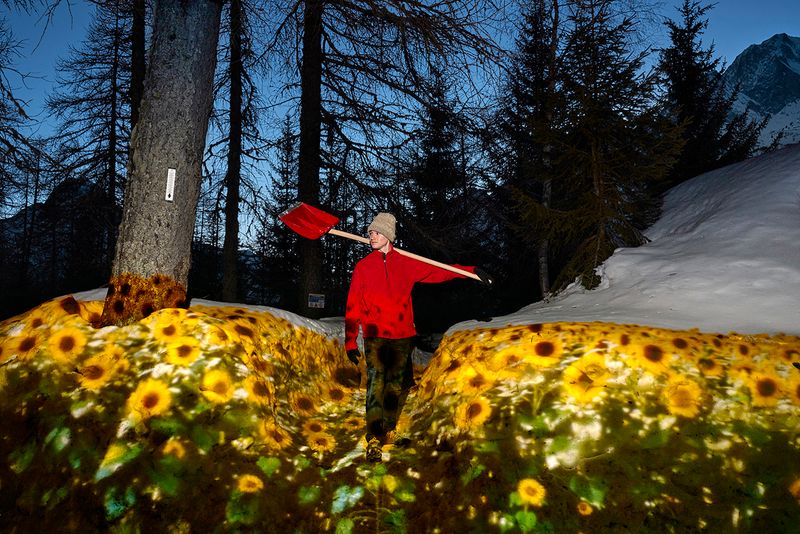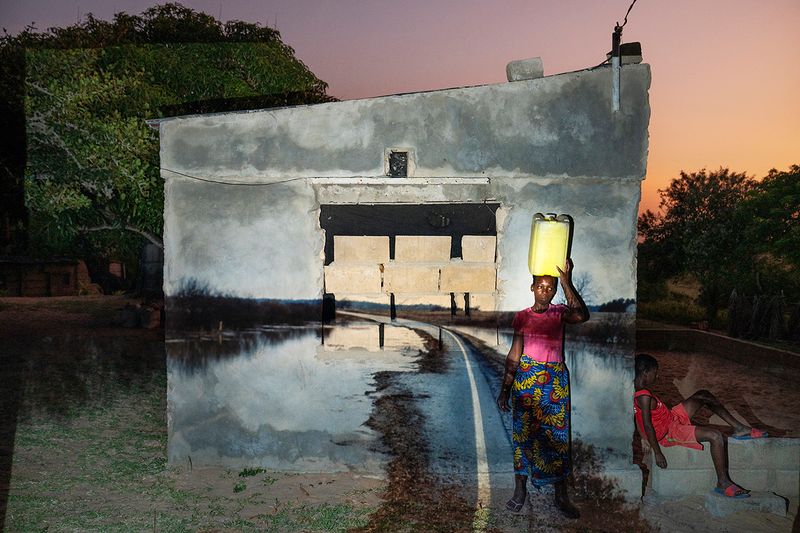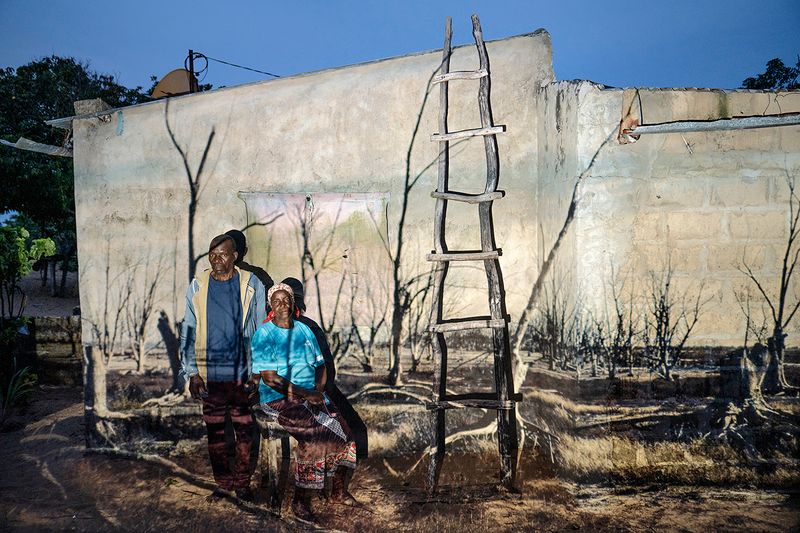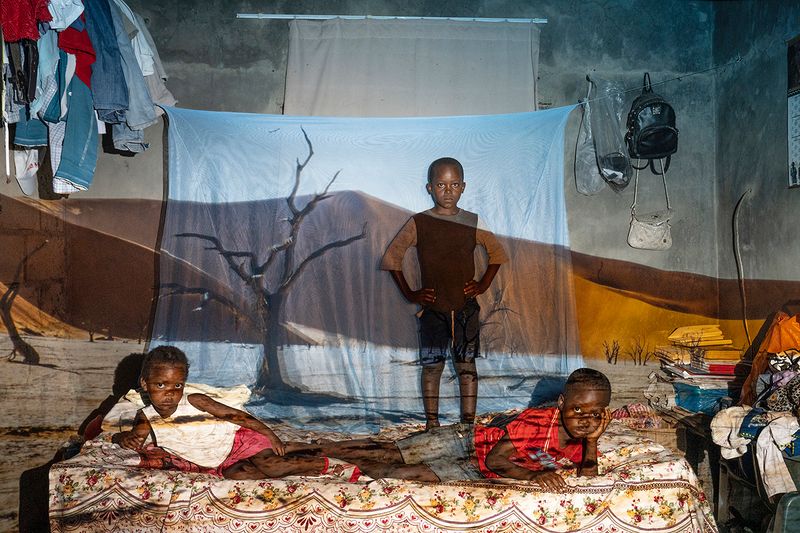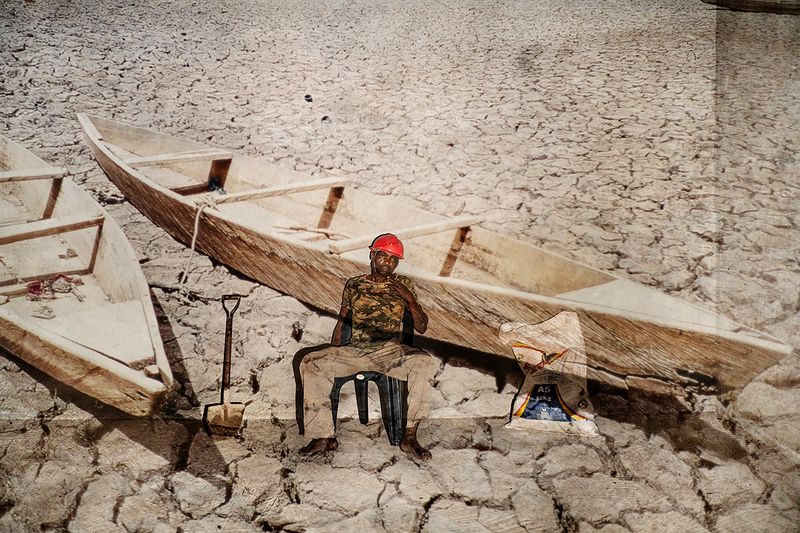Atlas of the New World
-
Dates2019 - 2022
-
Author
- Locations Italy, California, Mozambique, Maldives
What will the atlas on which future generations will study look like?
Due to climate change, some of the most radical transformations on the map of the world will only be visible over a few decades.
How can a photograph show the future?
These questions led us to the idea of the 'Atlas of the New World' project.
Following climate data from the United Nations, we went to photograph what will be the landscape of some places at the end of the century.
Photography is a medium that usually depicts the present.
Our idea, however, was to find a way to show the future in relation to the world we live in today.
With a special slide projector, built by us, we physically projected onto the landscape the image of its possible transformation.
The result is complex and dreamlike photographs that become a metaphorical projection of a not too distant future.
The project consists of 4 chapters taken on 4 continents, in the places most subject to morphological changes. We traveled between the Maldives, California, Mont Blanc and Mozambique.
The Maldives archipelago holds the record for the lowest country in the world. With an average height of only half a meter, it will be the first state to be submerged due to rising sea levels.
In California, if greenhouse gas emissions continue to increase, the temperature will rise 8°C by 2100, the frequency of devastating fires will increase, and 88% of the state will be in extreme drought.
The Mont Blanc massif, once considered the symbol of perennial glaciers, has now become the symbol of climate change. Scientists predict that by 2100 the glacier mass will be only 5% of what it is today, disrupting ecosystems and the communities living there.
Mozambique is among the most vulnerable African countries to natural disasters. Coastal erosion, frequent droughts, devastating cyclones and floods are episodes that now alternate and recur every year, affecting and destroying entire villages and compromising agricultural harvests.
